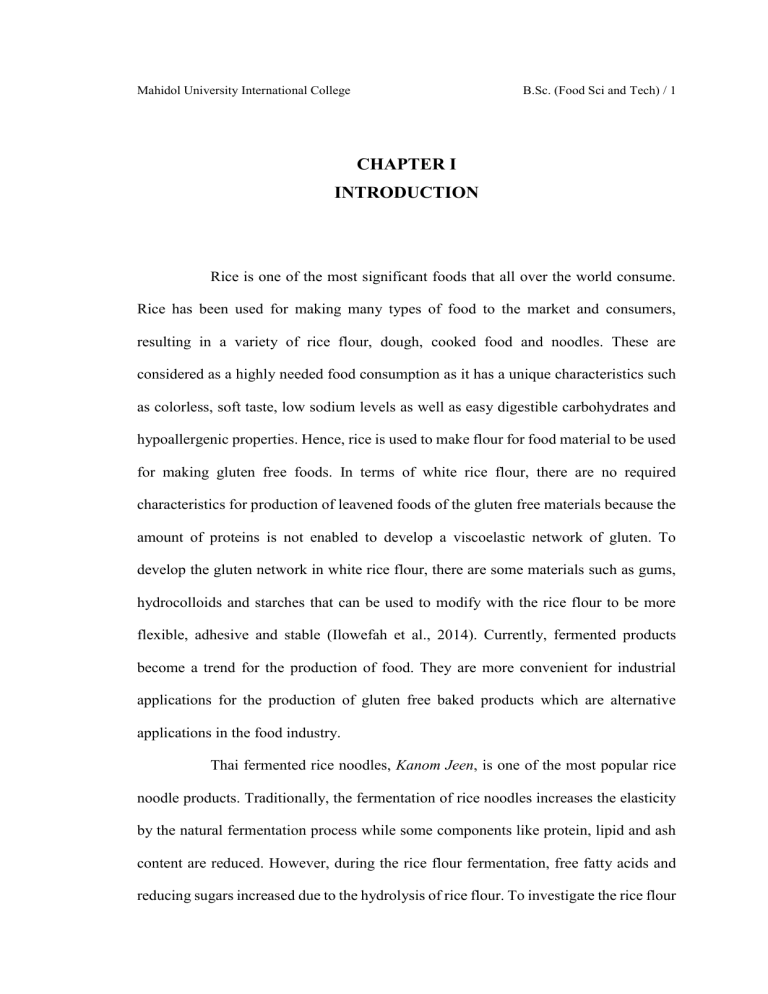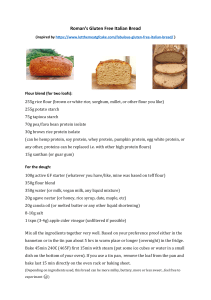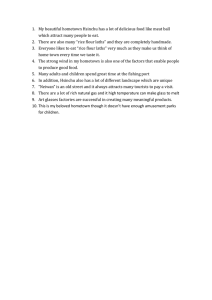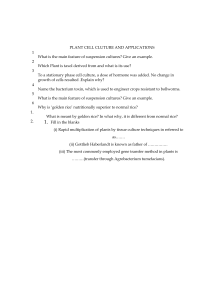
Mahidol University International College B.Sc. (Food Sci and Tech) / 1 CHAPTER I INTRODUCTION Rice is one of the most significant foods that all over the world consume. Rice has been used for making many types of food to the market and consumers, resulting in a variety of rice flour, dough, cooked food and noodles. These are considered as a highly needed food consumption as it has a unique characteristics such as colorless, soft taste, low sodium levels as well as easy digestible carbohydrates and hypoallergenic properties. Hence, rice is used to make flour for food material to be used for making gluten free foods. In terms of white rice flour, there are no required characteristics for production of leavened foods of the gluten free materials because the amount of proteins is not enabled to develop a viscoelastic network of gluten. To develop the gluten network in white rice flour, there are some materials such as gums, hydrocolloids and starches that can be used to modify with the rice flour to be more flexible, adhesive and stable (Ilowefah et al., 2014). Currently, fermented products become a trend for the production of food. They are more convenient for industrial applications for the production of gluten free baked products which are alternative applications in the food industry. Thai fermented rice noodles, Kanom Jeen, is one of the most popular rice noodle products. Traditionally, the fermentation of rice noodles increases the elasticity by the natural fermentation process while some components like protein, lipid and ash content are reduced. However, during the rice flour fermentation, free fatty acids and reducing sugars increased due to the hydrolysis of rice flour. To investigate the rice flour Saranit Sawatsakulpong Introduction / 2 fermentation, it was measured the gelatinization temperature and peak viscosity by using RVA or Rapid Visco Amylograph to observe the gelatinization which increased or decreased after fermentation. The fermented rice flour properties have less ability of gel forming and a stronger tendency to gelatinize and retrograde. Then, the rice noodles made from fermented rice flour had lower stress and higher strain as well as favorable chewy mouthfeel (Chinkrua et al., 2012). Nevertheless, rice flour contains less protein content that causes less strength, adhesiveness and cohesiveness, hence modify starch or substituted ingredients are required to provide the stability of structure such as bread flour or all purpose flour. Generally, Kanom Jeen is served and eaten with Thai curry or well known Nam Ya, which different kinds of curry depending on the flavor. To increase the product value, Kanom Jeen has to reform the pattern of eating Kanom Jeen to be an innovative product as a ready-to-eat food. These may provide a modern way of product development in terms of appearance, flavor, and texture of Kanom Jeen. To revolutionize Kanom Jeen dish, it thinks about the ingredients and processes, so Xiao Long Bao is an interesting food that Kanom Jeen can be made into Dim Sum style. Additionally, Xiao Long Bao has the preparation flour process that same as Kanom Jeen, then Xiao Long Bao is used to be the model of the innovative dish. This work aims to formulate the alternative way of Kanom Jeen by using modified starch with fermented rice flour. All purpose flour will be used as the main source of modified starch to provide strength, cohesiveness and adhesiveness. Moreover, the physicochemical properties, acceptability and sensory evaluation will be analysed. Mahidol University International College B.Sc. (Food Sci and Tech) / 3 CHAPTER II OBJECTIVES To formulate Kanom Jeen Xiao Long Bao as a Ready-to-eat product. To reformulate starch dough using fermented rice noodles into the pastry sheet form. To evaluate their physicochemical properties of the starch dough using fermented rice noodles. To evaluate the Sensory acceptability of ready-to-eat Kanom Jeen Xiao Long Bao.



